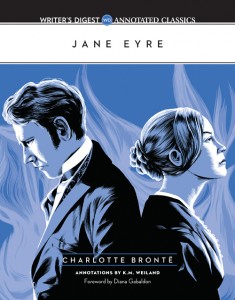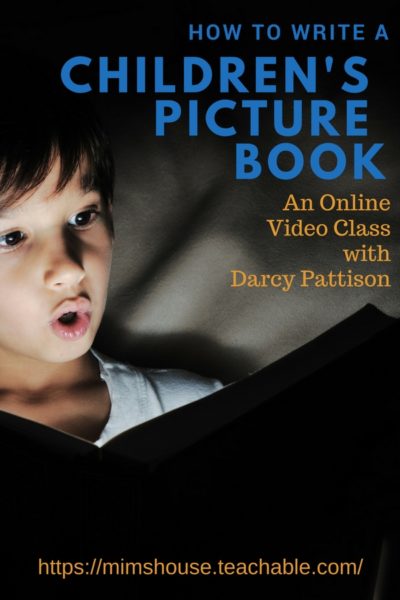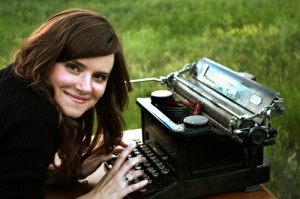Guest post by K.M. Weiland
Ooh, bad guys. Where would our stories be without their spine-tingling, indignation-rousing, hatred-flaring charm? It’s a legit question. Because, without antagonists to get in our heroes’ way and cause conflict, we quite literally have no story.
So write yourself a warty-nosed, slimy-handed dude with a creepy laugh. No problemo, right? Bad guys aren’t nearly as complicated as good guys. Or are they? I would argue they’re more complicated, if only because they’re harder for most of us to understand (or maybe just admit we understand).
The best villains in literature are those who are just as dimensional and unexpected as your protagonists. They’re not simple black-and-white caricatures trying to lure puppies to the dark side by promising cookies. They’re real people. They might be our neighbors. Gasp! They might even be us!
 That raises some interesting possibilities, doesn’t it? It also helps us realize that villains can come in many different shapes and sizes. While studying Charlotte Brontë’s rightful classic Jane Eyre (which I analyze in-depth in my book Jane Eyre: The Writer’s Digest Annotated Classic), I identified four major types of villain.
That raises some interesting possibilities, doesn’t it? It also helps us realize that villains can come in many different shapes and sizes. While studying Charlotte Brontë’s rightful classic Jane Eyre (which I analyze in-depth in my book Jane Eyre: The Writer’s Digest Annotated Classic), I identified four major types of villain.
The Evil Villain: Mr. Brocklehurst
When we think of villains, this is the type we think of most often. He’s just nasty. He’s cruel, hypocritical, self-serving—and readers just want to punch him in the face. He may take the form of a mafia don, a dictator, a serial killer, or even something as comparatively “harmless” as an overbearing father.
In Jane Eyre, the evil villain manifests deliciously in the tyrannical Mr. Brocklehurst, the head of the horrible boarding school where Jane’s aunt disposes of her. Brocklehurst isn’t evil because he’s out killing, raping, or stealing. He’s evil because of his complete lack of compassion and his sadistic pleasure in his own power. When a young Jane dares to stand up to him, he subjects her to cruel punishment and lies about her to the rest of the school.
Even worse, he pretends he’s a pious benefactor. He has no idea he’s a cruel bum. He believes he and his school are saving these poor girls! Always remember that even the most evil villains will rarely recognize their own villainy. As far as they’re concerned, they’re the heroes of their own stories. Lucky for us, their hypocrisy only ups the ante and makes them more despicable.

The Insane Villain: Bertha Mason
Sometimes villains aren’t so much deliberately bad as psycho bad. They’re out of their heads, for whatever reason, and they may not even realize how horrifically their actions affect others. Psychos are always popular in horror stories for the simple fact that their near inhuman behavior makes them seem unstoppable. If they can’t understand the difference between right and wrong, what chance will your hero have of convincing them of the error of their ways—before it’s too late?
Perhaps the most notable antagonist in Jane Eyre is the one readers don’t even see for most of the book. She’s on stage for only a few scenes and mentioned outright in only a few others. But her presence powers the entire plot. [SPOILER] I am, of course, talking about Bertha, the mad wife of Jane’s employer and would-be husband Edward Rochester, whom he secretly keeps locked in the attic. [/SPOILER] The whole story might not even have happened had Bertha not been bonkers.
The insane villain is a force of nature. Although there will always be motivations for their behavior (even if they’re only chemical), they are people who aren’t behaving badly for sensible reasons. They can’t be rationalized with, and they won’t be moved by empathy for others. Their sheer otherness, coupled with their immovability, makes them one of the most fearsome and powerful types of villain.
The Envious Villain: Blanche Ingram
The envious villain is your garden-variety bad guy (or girl). These folks are a dime a dozen because their motivations and desires are ones almost all of us experience from time to time. Their envy, ego, and personal insecurity drives them to treat others badly for no other reason than spite (whether it’s petty or desperate).
Halfway through her story, Jane Eyre faces a formidable rival for Mr. Rochester’s love—the beautiful Blanche Ingram. Blanche is everything Jane isn’t (she’s the popular girl to Jane’s lunch-table outcast): gorgeous, rich, accomplished, and socially acceptable. On the surface, Blanche has no reason to fear or envy our plain-Jane protagonist. And yet, right from the start, she senses Jane as a threat to her marriage plans, and it immediately shows in her snide, condescending, and sometimes downright cruel behavior.
Envious villains are often those who, like Blanche, seem to have it all. But their glamour disguises deep personal insecurities. No one is ever a jerk for no reason. There’s always something (whether it’s a spoiled childhood or low self-esteem) that drives these most human of all villains. But don’t underestimate the power of their antagonism. Their envy can cause them to commit all sorts of crimes—everything from rudeness to murder.
The Ethical Villain: St. John Rivers
This is my personal favorite villain type—because he’s so darn scary. The ethical villain, like the envious villain, is less noticeable in his antagonism than are evil and insane baddies. This guy isn’t even a bad guy at all. He’s a very good guy. But he’s taken his goodness to the extreme. He’s on a crusade to save the rest of the world—either including or in spite of the protagonist—and heaven help anyone who gets in his way. He’s convinced the means absolutely justify his holy end.
Jane’s cousin St. John Rivers is a marvelous character. He is a man who is determined to live righteously and make his life count for some deeper purpose. He surrenders his own love for the village belle in order to go to India as a missionary. Doesn’t sound so bad, does it? And yet, his cold-hearted devotion to what he views as his duty, and his determination to make Jane adhere to those views, presents her with her single fiercest and most dangerous antagonist. St. John would never dream of harming Jane or committing a crime, but his fanaticism for his cause very nearly destroys her life.
The ethical villain is ethical. He conforms to most, if not all, of society’s moral norms. But somewhere along the line, those ethics fail to match up with the protagonist’s. That exact point is where he becomes an obstacle (and therefore an antagonist) to the hero. But he also offers us one of our richest opportunities for exploring moral gray areas and deep thematic questions. As such, he is arguably the most valuable villain type in your author’s toolbox.
The possibilities for antagonists are every bit as rich as they are for protagonists. Stop and take a second look at your story’s villain. Does he fit into one of the four categories we’ve discussed here? How can you take full advantage of that category’s opportunities for creating a compelling opponent? Or would your story benefit if you used a different kind of villain? Or maybe more than one kind side by side? The choices are endless!
—

Thank you so much for having me today, Darcy!
There’s one more type, my favorite, “the villain inside of me.” It is that dark side of the protagonist he/she wrestles with and struggles to restrain.
Darcy, I have been receiving ‘Fiction Notes’ for some time now and they have always been very helpful and insightful for me as a writer. However this last publication with guest K.M. Weiland on the “4 Types of Villian” was especially helpful to me for the project I’m currently working on. You bring so much to the table with your insight and connections to other writers. Thank you so much. I look forward to your next publication.
Thanks, Teri. Glad that this guest post struck a chord!
Darcy
Eduardo:
Nice chatting with you on Twitter about this. I think there still needs to be an external villain. To me, the villain-inside-me is more of a nicely complicated protag; but s/he still needs to face that external force that keeps him/her from the story’s goal.
Darcy
@Eduardo: Although, as I said on Twitter, Man Against Self is a timeless story platform, I do tend to agree with Darcy. Conflict becomes more immediate and visual when we’re able to incorporate an external antagonist as well. It can complicate the conflict by bringing new dimensions (contrast and comparison) to the protagonist’s inner struggle. You used Breaking Bad as an example. I haven’t seen the show, but I know the protagonist faced many external antagonists in addition to himself.
@Teri: I’m so glad you enjoyed the post!
Very interesting, thank you for the deep descriptions. My WIP also needs a variety of villains, some evil but others envious and ethical. I wasn’t sure how to write the more “normal” of the antagonists, but thanks to this article I have some tools to try! Thanks so much for the inspiration!
*Thank you* for this extremely helpful post! I’ve just started brainstorming characters for a new project, and I love the idea of having an Ethical Villain. Could I ask you for some more examples of this species? I want my EV to be non-religious, but every time I try to figure out how he will justify his rigid principles, I end up back at twisted religiosity. How else might he argue for his own absolute rightness?